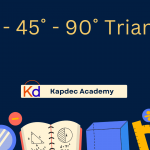In today’s digital-first world, attention spans are shrinking, and educators are constantly looking for creative ways to keep students engaged. For STEM (Science, Technology, Engineering, and Mathematics) tutors, gamification—the application of game-like elements in learning—has emerged as a powerful strategy to make lessons interactive, fun, and impactful.
Here’s a look at how STEM tutors are using gamification to boost student engagement and improve learning outcomes(Refer).
1. Point Systems and Leaderboards
One of the simplest yet most effective gamification techniques is the points and leaderboard system. STEM tutors award points for completing assignments, solving problems, or participating in discussions.
Students can then track their progress on leaderboards, which introduces a friendly competitive element. This not only motivates them to keep improving but also fosters a sense of achievement.
Example: A math tutor might give points for each correctly solved equation, with bonus points for solving advanced problems quickly.
2. Level-Based Learning Paths
STEM subjects often build on foundational concepts. Tutors are turning lessons into level-based journeys, where students must “unlock” the next topic by mastering the previous one—similar to progressing in a video game.
This creates a sense of progression, rewarding persistence and mastery.
Example: In coding classes, students might start with “Beginner Level” on basic syntax, moving to “Intermediate Level” for loops and conditions, and finally “Advanced Level” for building complete programs.
3. Achievement Badges
Badges work as digital rewards that celebrate milestones. Tutors use them to mark progress, such as “Problem-Solving Pro” or “Physics Formula Master.”
Badges not only act as instant gratification but also help students visualize their learning journey by Kapdec.
4. Interactive Quizzes and Challenges
Instead of traditional paper tests, tutors use online quizzes, puzzles, and challenges that provide instant feedback. Platforms like Kapdec Kahoot! and Quizizz allow STEM topics to be turned into interactive competitions, keeping students excited about participation.
5. Story-Driven Learning
STEM tutors are increasingly embedding concepts in narrative-driven scenarios. For example, solving a set of math problems might “save a spaceship from crashing,” or completing a physics experiment might “unlock a secret lab.”
Storytelling gives context to abstract concepts, making them more relatable and memorable.
6. Virtual Rewards and Real-World Prizes
While digital rewards are common, many STEM tutors blend them with tangible incentives. For instance, students who consistently earn high scores in gamified exercises may get extra lab time, access to advanced projects, or even small prizes.
7. Collaborative Team Play
Gamification isn’t just about competition—collaboration plays a big role too. Tutors create team-based challenges where students must work together to solve STEM problems, promoting teamwork, communication, and peer learning.
Why Gamification Works in STEM
- Boosts Motivation: Rewards and progress tracking encourage consistent participation.
- Makes Learning Fun: Game-like elements reduce the perceived difficulty of complex STEM topics.
- Encourages Problem-Solving: Gamified challenges simulate real-world scenarios.
- Builds Confidence: Students see measurable progress, which fuels confidence and curiosity.
FAQ’s
1. What is gamification in STEM education?
Gamification in STEM education refers to the use of game-like elements—such as points, badges, leaderboards, challenges, and rewards—within the teaching process to make learning more interactive and enjoyable. Rather than replacing the curriculum, gamification enhances it by turning problem-solving, experiments, and practice tests into engaging experiences. For example, a physics tutor might create a “level-up” system for mastering mechanics concepts, motivating students to progress just like in a video game.
2. Why is gamification effective for STEM subjects?
3. What are some common gamification techniques used by STEM tutors?
Time-Based Challenges: Encouraging quick thinking with timed quizzes.
STEM tutors often blend these with real-world applications, like virtual engineering projects or simulated science experiments, to reinforce learning through active participation.
Points & Badges: Awarding virtual rewards for completing assignments or mastering skills.
Leaderboards: Displaying rankings to encourage healthy competition.
Levels & Unlockable Content: Giving access to advanced material only after mastering prerequisites.
Quests & Missions: Turning problem sets into story-driven challenges.
4. How does gamification help students struggling with STEM concepts?
For students who find STEM concepts challenging, gamification breaks learning into smaller, more manageable steps and rewards progress at every stage. Instead of being discouraged by a difficult equation or project, students earn recognition for incremental success, which builds confidence. For instance, a tutor might use a “streak system” to reward consistent daily practice in math, gradually improving problem-solving skills without overwhelming the student.
5. Can gamification work for both online and in-person STEM tutoring?
Yes. In online tutoring, gamification tools can be integrated directly into learning platforms—like progress bars, quiz leaderboards, or virtual badges. In in-person settings, tutors can use physical game boards, scorecards, or team-based competitions. Hybrid approaches work well too, where students track their progress digitally but also engage in face-to-face collaborative challenges. The key is to match the gamification method with the learning environment and the student’s preferences.
6. Are there risks or downsides to gamification in STEM education?
While gamification is highly effective, it can backfire if not implemented thoughtfully. Overemphasis on competition may demotivate students who are consistently at the bottom of leaderboards. Rewards can also become the sole focus if intrinsic learning goals are not emphasized. STEM tutors must strike a balance—ensuring that gamification supports deep understanding, not just short-term wins.
7. How can STEM tutors measure the success of gamification?
Success can be measured using both quantitative and qualitative data. Quantitatively, tutors can track improvements in test scores, homework completion rates, and time spent actively engaged. Qualitatively, they can assess student feedback, enthusiasm, and willingness to tackle challenging topics. Many STEM tutors also use pre- and post-gamification surveys to see if student confidence and interest in STEM have increased.
8. What are some examples of gamification platforms or tools for STEM tutors?
Popular tools include:
CodeCombat for learning programming through gaming.
STEM tutors often customize these tools to align with lesson objectives, ensuring students stay motivated while mastering curriculum requirements.
Kahoot! for interactive quizzes.
Classcraft for RPG-style learning environments.
Quizizz for self-paced review games.
Minecraft Education Edition for STEM-based building challenges.
Final Thoughts
Gamification is not about replacing traditional teaching—it’s about enhancing it. For STEM tutors, integrating game mechanics transforms lessons from passive learning experiences into interactive, goal-driven adventures. Whether it’s earning points, unlocking levels, or collaborating in team quests, these techniques turn education into an engaging journey that students are eager to take.






